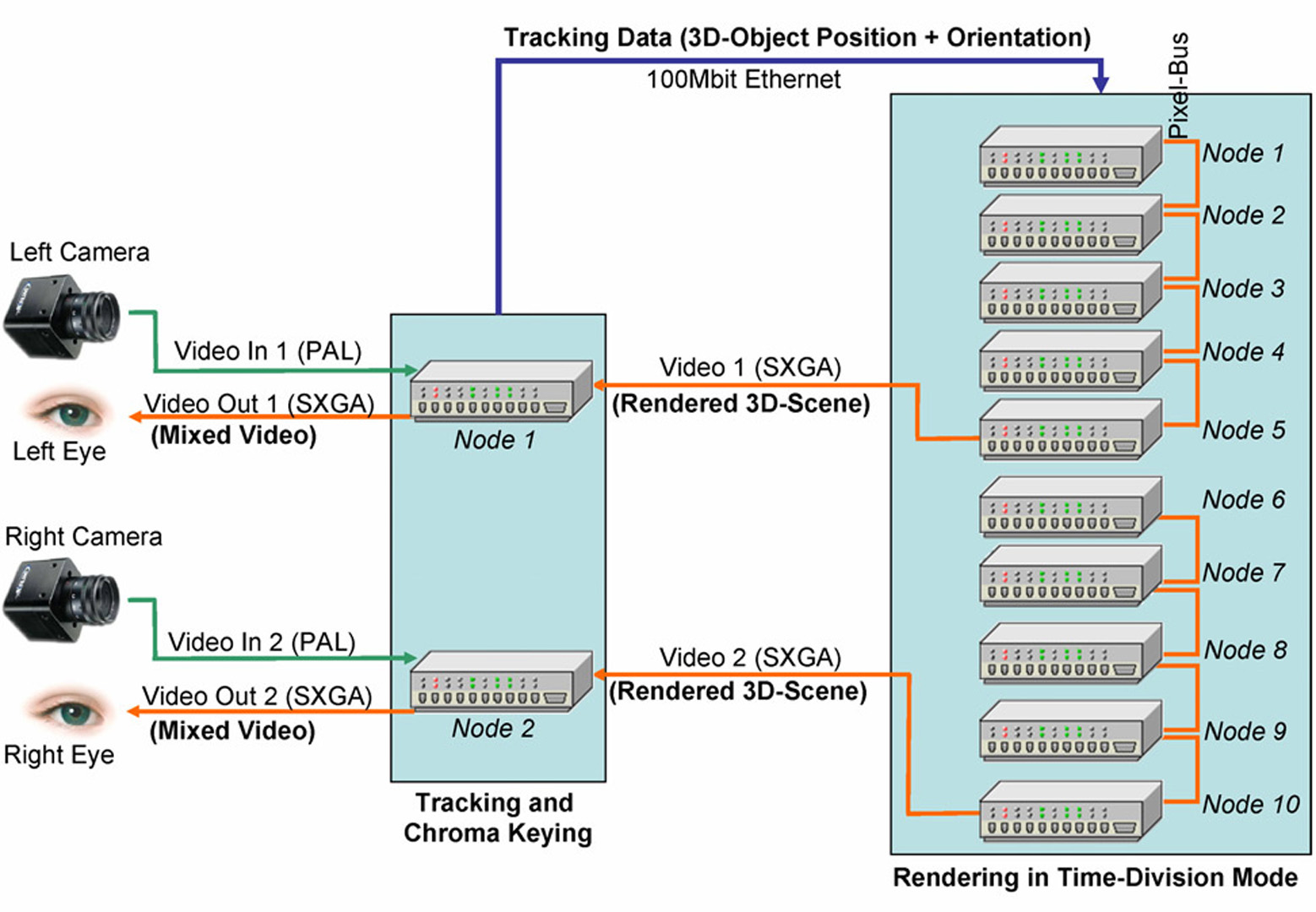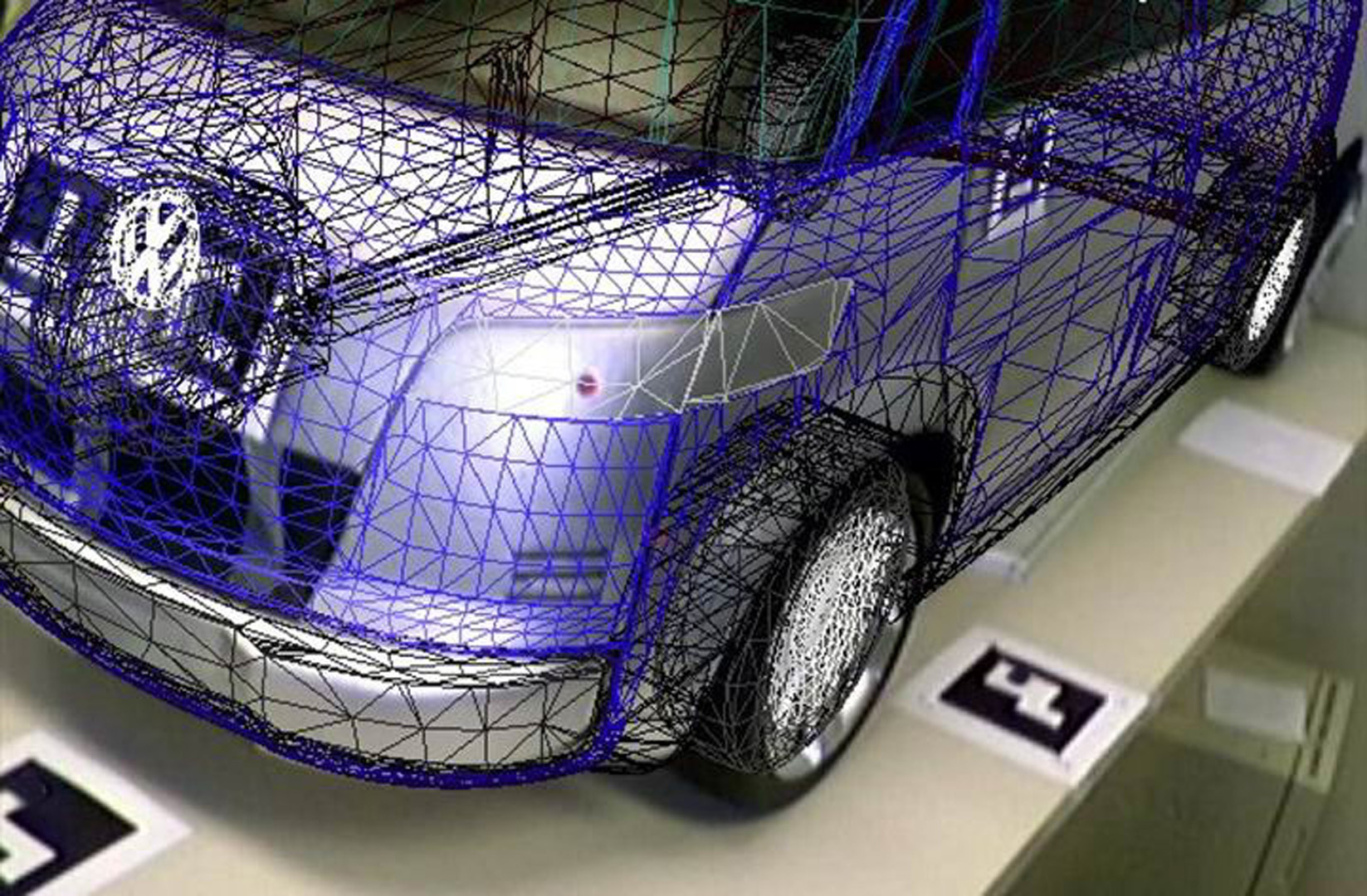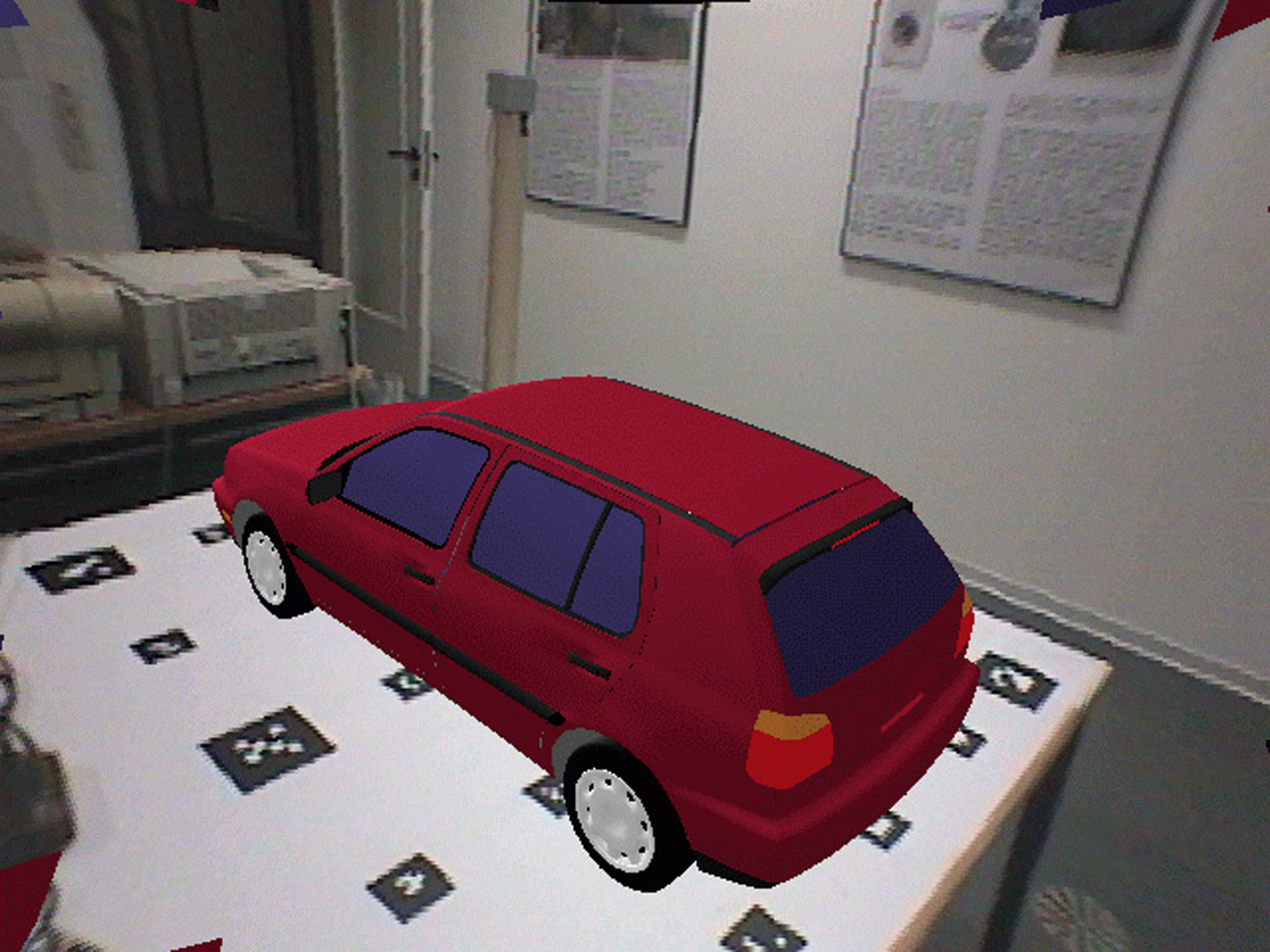“A Scalable PC-Cluster Architecture for Highly Polygonal Augmented Reality Applications” by Matysczok, Grafe and Wojdala
Conference:
Type(s):
Entry Number: 044
Title:
- A Scalable PC-Cluster Architecture for Highly Polygonal Augmented Reality Applications
Presenter(s)/Author(s):
Abstract:
The growing number of Augmented Reality (AR) applications demands high complexity of graphics elements. An example is AR in automotive industry, where there is a need to use models of several million polygons. Even the most powerful today’s graphics boards, based on Ati’s Radeon X800 or nVidia’s GeForce 6800 cannot run these models at high frame rates and fall short of the frame rate of video, with which the graphics is mixed.
Therefore we have developed a scalable PC-cluster architecture, which overcomes graphics performance limitations and proposes an efficient method of combining video with graphics, which does not affect the graphics performance of the cluster. *Figure 1 shows the architecture of our AR PC-cluster system. The stereoscopic live video is shot by two cameras attached to an HMD and producing two interlaced video signals. These signals are captured by two dedicated nodes equipped with frame grabbers. Each node is processing the captured video in real-time to retrieve the tracking data (for the marker based tracking) and sends them by Ethernet to the rendering nodes.






